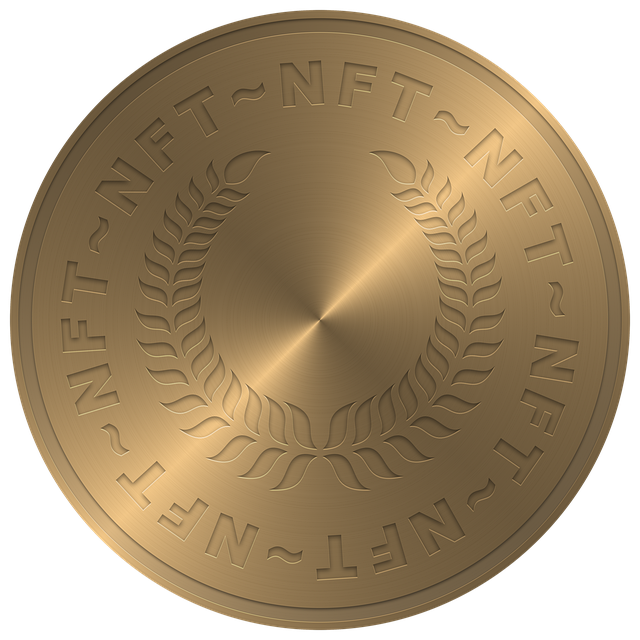Crypto Arbitrage Trading Bot Development in 2025: A Comprehensive Guide
Author: Jameson Richman Expert
Published On: 2025-09-03
Prepared by Jameson Richman and our team of experts with over a decade of experience in cryptocurrency and digital asset analysis. Learn more about us.
Developing a crypto arbitrage trading bot in 2025 has become an essential strategy for both seasoned traders and burgeoning fintech entrepreneurs eager to capitalize on the inherent volatility, market fragmentation, and inefficiencies characteristic of the modern cryptocurrency landscape. What once was a niche, highly technical endeavor has now matured into an advanced, scalable system capable of generating consistent, automated profits. Throughout my extensive experience—marked by iterative experimentation, setbacks, and refinements—I have accumulated invaluable insights into market microstructure, API integration nuances, latency mitigation, and sophisticated risk management techniques. This comprehensive guide provides an in-depth, step-by-step framework, blending foundational concepts with cutting-edge technological strategies, to equip you with the tools and knowledge necessary to develop a profitable arbitrage bot suited for 2025’s fiercely competitive environment.

Understanding Crypto Arbitrage and Its Strategic Significance in 2025
Crypto arbitrage involves exploiting price discrepancies of identical digital assets across multiple trading venues. In 2025, this strategy remains highly relevant but has evolved significantly due to the increasing complexity of the crypto ecosystem. Traditional arbitrage focused on centralized exchanges (CEXs), but now it encompasses cross-chain arbitrage, decentralized finance (DeFi) protocols, and liquidity pools. For instance, Bitcoin (BTC) might be priced at $40,000 on Binance but at $40,200 on MEXC. An optimized bot detects these real-time price differentials, executes simultaneous buy and sell orders across platforms, and accounts for transaction costs, including trading fees, withdrawal fees, and network gas charges, to lock in guaranteed profits. The landscape’s evolution stems from several factors: - **Market Fragmentation:** Regulatory differences across regions create disparate trading conditions, liquidity levels, and asset availability. - **Proliferation of DEXs & Layer 2 Solutions:** Decentralized exchanges and Layer 2 scaling solutions (e.g., Optimism, Arbitrum) significantly increase arbitrage channels. - **Cross-Chain Ecosystems:** Protocols like Polkadot, Cosmos, and Avalanche facilitate asset transfers and liquidity sharing across chains, opening up multi-layer arbitrage opportunities. - **Tokenization & Synthetic Assets:** The rise of tokenized real-world assets and synthetic tokens further complicates and enriches arbitrage possibilities. To succeed in 2025, your arbitrage strategy must efficiently leverage these multidimensional opportunities while managing increased volatility, execution risk, and latency challenges.
My Early Developments and Lessons Gained
My initial attempts at building arbitrage bots were characterized by a steep learning curve and multiple setbacks, often due to unforeseen technical limitations. I started with basic scripts interfacing manually with a handful of exchange APIs, which highlighted critical issues: - API Mastery and Standardization: Each exchange offers unique API standards, authentication protocols, rate limits, and data formats. For example, Binance’s REST APIs are well-documented, but WebSocket streams for real-time data demand careful handling of reconnections and error states. Developing a unified API management layer simplifies multi-exchange interactions, ensures consistency, and eases maintenance. - Latency and Infrastructure Optimization: Since arbitrage opportunities can last mere milliseconds, infrastructure latency becomes a critical factor. Hosting servers physically close to exchange data centers (using colocation or dedicated servers near major hubs like AWS GovCloud or cloud edge nodes), optimizing network routing, and choosing high-performance programming languages like Rust or C++ drastically improve response times. - Market Microstructure Insights: Recognizing order book depth, bid-ask spreads, and order flow patterns informs more accurate assessments of arbitrage viability. During periods of high volatility, spreads often widen, increasing profit margins but also the risk of slippage and partial fills. - Data Visualization and Strategy Refinement: Tools like TradingView, combined with custom back-testing scripts, enable visual pattern recognition and strategy validation. Incorporating advanced analytics—such as order book heatmaps, trade flow analysis, and latency profiling—enhances decision-making. Read more about this process here.
Designing a Resilient and High-Performance Arbitrage Bot in 2025
To develop an effective arbitrage bot capable of thriving in 2025’s fast-paced environment, it needs to integrate several core components optimized for speed, resilience, and scalability: - Multi-Exchange API Integration: Connect to a wide array of platforms—centralized (e.g., Binance, MEXC, Bitget, Bybit) and decentralized (e.g., Uniswap, SushiSwap, PancakeSwap)—each with their own API standards, authentication methods (API keys, OAuth), and rate limits. Developing a modular SDK or middleware layer that abstracts these differences allows for easier expansion, maintenance, and error handling. - Real-Time Data Acquisition and Processing: Implement persistent WebSocket streams for high-frequency market data, including order book updates, trade feeds, and price ticks. Incorporate filtering, validation, and smoothing algorithms—such as Kalman filters or exponential moving averages—to reduce data noise, false signals, and latency-induced anomalies. - Trade Execution Logic: Develop adaptive algorithms that evaluate arbitrage opportunities based on multiple factors: - **Price thresholds**—minimum percentage difference accounting for fees and slippage. - **Transaction costs**—including taker/maker fees, withdrawal fees, and gas costs. - **Market conditions**—network congestion, liquidity depth, and volatility. - **Estimated slippage**—using historical data and real-time analytics. Employ conservative buffers to avoid executing trades that appear profitable on paper but are unviable in practice. - Error Handling and Fail-Safe Mechanisms: Embed automatic reconnection protocols, comprehensive logging, and fallback procedures. For example, if an API outage occurs, the bot should pause trading and alert operators. Redundant server setups, cloud-based failover strategies, and circuit breakers further enhance operational robustness and reduce downtime risks.

Speed and Algorithm Optimization Strategies in 2025
Speed is the lifeblood of successful arbitrage in 2025, where opportunities can vanish within milliseconds. To gain a competitive edge, consider these advanced optimization strategies: - Triangular Arbitrage across Platforms: Exploit inefficiencies among three currencies or tokens, such as BTC/ETH/USDT, across multiple exchanges. By concurrently executing a sequence of trades that form a closed loop, you can capitalize on cross-market discrepancies and improve capital efficiency. - Statistical and Machine Learning Arbitrage: Utilize models like mean reversion, cointegration, or supervised learning algorithms (e.g., neural networks, random forests) to forecast short-term price corrections. These models help preempt arbitrage windows, allowing the bot to act proactively rather than reactively. - Back-Testing and Simulation: Conduct extensive testing against historical market data, covering various market regimes, to identify structural weaknesses, optimize parameters, and estimate slippage and fees impacts. Simulation environments help refine execution strategies and reduce real-world surprises. - Parallel and Distributed Processing: Leverage multi-threaded programming, GPU acceleration, or cloud computing platforms (e.g., AWS, Google Cloud, Azure) to monitor multiple pairs and exchanges simultaneously. Technologies like Kubernetes or serverless architectures enable scalable deployment, reducing latency and expanding market coverage. For a detailed technical walkthrough, explore this comprehensive tutorial.
Risk Management and Automation in a Rapidly Changing Market
While automation unlocks high-frequency trading capabilities, it also introduces significant risks. Robust risk management protocols are vital to protect capital and ensure sustainability: - Automated Stop-Loss and Take-Profit Orders: Integrate dynamic, real-time triggers that activate at predefined profit or loss levels. For instance, if a trade moves against your expectation beyond a set threshold, the bot should automatically close the position to prevent catastrophic losses. - Position Sizing and Leverage Controls: Use algorithms that calculate optimal trade sizes based on account balance, volatility measures (like ATR), and confidence levels. This prevents overexposure during volatile market conditions. - API Rate Monitoring and Limits Compliance: Continuously track API call frequencies and implement adaptive throttling. Violating rate limits can lead to bans or degraded performance, so integrating real-time monitoring tools ensures adherence. - Simulation and Paper Trading: Extensively test your strategy under simulated conditions that replicate live markets, including slippage, latency, and fee structures. This builds confidence and uncovers hidden vulnerabilities before risking actual funds. - Real-Time Monitoring and Alerts: Deploy dashboards and automated alerts that track system health, market anomalies, and unexpected behaviors. Immediate notifications enable prompt interventions, minimizing losses during adverse events.
Further insights can be found here.Legal, Security, and Ethical Considerations in 2025
Operating a crypto arbitrage bot in 2025 requires diligent attention to legal, security, and ethical standards: - **Regulatory Compliance:** Jurisdiction-specific laws govern automated trading, cross-border transactions, and KYC/AML requirements. Engaging legal counsel ensures your operations align with local regulations, preventing penalties or account bans. Stay informed about evolving policies in key markets like the US, EU, and Asia. - **Security Best Practices:** Protect API keys with hardware security modules (HSMs), encrypt sensitive data, and employ multi-factor authentication. Host infrastructure on secure, hardened servers with regular security audits. Use intrusion detection systems and threat modeling to proactively identify vulnerabilities. - **Ethical Trading:** Avoid manipulative tactics such as wash trading, spoofing, or front-running. Maintain transparency with exchanges and stakeholders, ensuring your strategies uphold the integrity of markets. Ethical compliance fosters reputation and long-term viability. - **Data Privacy and User Rights:** Respect user data, adhere to privacy standards like GDPR, and implement secure data handling practices to mitigate legal risks and uphold trust.

Emerging Trends and Skillsets for 2025 and Beyond
The crypto arbitrage environment is set for rapid innovation driven by blockchain technology, regulation, and market evolution. Key emerging trends include: - Cross-Chain Arbitrage & DeFi Protocols: Developing bots that leverage cross-chain bridges, wrapped tokens, and liquidity pools to exploit price discrepancies across multiple networks. Mastery of protocols like Wormhole, LayerZero, and Avalanche’s subnet architecture is increasingly valuable. - Interoperability & Smart Contract Development: Building expertise in interoperability protocols (Polkadot, Cosmos SDK, LayerZero) enables seamless asset transfers and cross-chain smart contracts, unlocking new arbitrage opportunities. - AI & Data Science Integration: Employ deep learning, reinforcement learning, and advanced analytics to predict market movements, identify emerging arbitrage windows, and adapt strategies proactively. Skills in Python, TensorFlow, or PyTorch are highly relevant. - Regulatory Technology (RegTech) & Compliance Automation: Automate KYC/AML workflows, transaction reporting, and audit trails to ensure compliance amid evolving regulations. Familiarity with blockchain analytics tools like Chainalysis, Elliptic, or TRISA is advantageous. Continued education through industry webinars, certifications, and active participation in blockchain communities will keep your skills aligned with technological advancements and regulatory developments.
Conclusion: Charting Your Path to Profitable Crypto Arbitrage in 2025
From my journey of experimentation and refinement, I can affirm that success in crypto arbitrage hinges on a blend of technological mastery, disciplined execution, and adaptability. Building a profitable arbitrage system in 2025 demands deep understanding of market microstructure, robust risk management, compliance, and a proactive approach to emerging opportunities. As the landscape becomes more complex, your infrastructure, algorithms, and skills must evolve continuously. Prioritize systematic testing, security, and ethical considerations—these are the pillars of sustainable success. Stay vigilant for new developments, leverage automation intelligently, and maintain a mindset of continuous learning to stay ahead in this dynamic environment. For ongoing insights and updates, explore this detailed article.